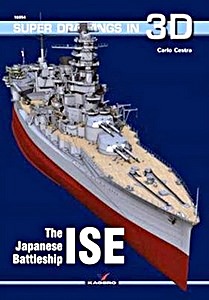The Japanese Battleship Ise (Super Drawings in 3D)
Ise was laid down as battleship 5 at the Kawasaki Heavy Industries shipyard in Kobe on 10 May 1915, launched on 12 November 1916, completed on 15 December 1917, and assigned to the Kure Naval District.
Completed too late for service in World War I, in the early 1920s, Ise patrolled off the Siberia coast and in northern waters in support of Japan's Siberian Intervention against the Bolshevik Red Army. From the mid-1920s through the late 1930s, Ise patrolled mostly off of the China coast.
A volume in the Super Drawings in 3D Series. With ground-breaking 3D imagery, each corner, angle, and dimension of the ship is viewable.
With various close-up views, and each 3D image based on actual technical scale drawings and photographs, this is an exceptional reference tool.
Information on the design, development and combat history of the vessel is also included, as well as numerous photographs and scale drawings.
Caractéristiques
| Auteur : | Carlo Cestra |
|---|---|
| Présentation : | 80 pages, 30 x 22 x 0.9 cm, broché |
| Illustration : | 120 dessins assistés par ordinateur et 3D et couleurs, photos en N&B, dessins à l'échelle |
| Editeur : | Kagero Oficyna Wydawnicza (PL, 2017) |
| Série : | Super Drawings in 3D |
| ISBN: | 9788365437624 |

The Japanese Battleship Ise
Langue : anglais
Acheter sur Amazon FranceAcheter sur Amazon Belgique
Acheter sur Amazon Canada
Livraison rapide, retour simple









